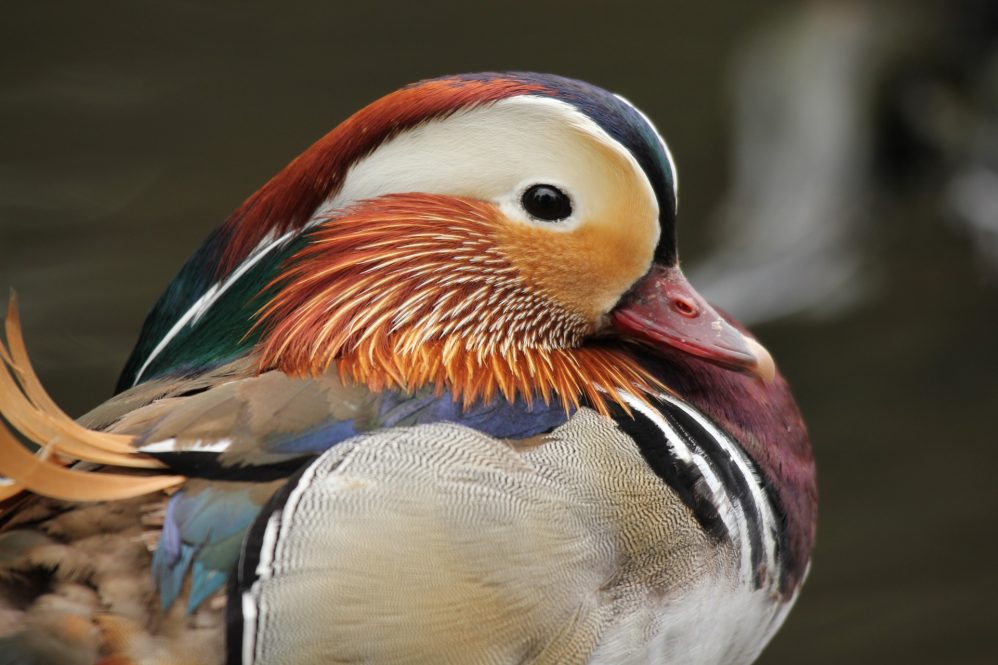Avian illnesses are a perennial topic of interest for researchers. These viruses can spread between birds, and sometimes even humans, and evolve rapidly.
H5N6, a highly pathogenic avian influenza virus, has been on scientists’ radar since 2014. There are several “clades,” or genetically distinct strains, of H5N6. Clade 2.3.4.4 is currently circulating in East Asia and has caused outbreaks in Europe, Africa, North America, and other parts of Asia.
Assistant professor of pathobiology in the College of Agriculture, Health and Natural Resources, Dong-Hun Lee recently published a paper in Viruses demonstrating the transmissibility of clade 2.3.4.4 in domestic pigeons and mandarin ducks.
This paper is the first to study this clade in these two birds. Wild waterfowl like Mandarin ducks are natural hosts for avian influenza viruses. Terrestrial birds like pigeons often interact with waterfowl, making them an important bridge species that could pass a virus onto poultry.
Since the H5 virus lineage was first identified in 1996, it has caused severe economic losses for the global poultry industry and poses a severe public health threat. In 2015, an H5 outbreak caused $3.3 billion in losses to the U.S. poultry industry.
Since 2003, 862 people have been infected with this virus in 17 countries, with a 53% fatality rate. These infections come from direct, unprotected contact with infected birds. There is no evidence this virus can be passed between humans.
“It’s a very dangerous virus in birds and in people, too,” Lee says.
Lee and his collaborators focused on two of the six novel genotypes in clade 2.3.4.4: C1 and C4. C1 was the first genotype to emerge in wild birds in Korea, while C4 became the most prevalent during epidemics in Korea where the study took place.
The researchers studied the infectivity, pathogenicity, and transmissibility of both genotypes. After testing the birds to ensure none of them already had antibodies or antigens for the virus, Lee’s team infected a portion of the Mandarin ducks with C1 and C4 and a portion of the pigeons with C1. The researchers were interested in determining if the C1 and C4 genotypes differed in wild waterfowl, since those birds are a natural reservoir species for the virus.
They tested the transmissibility of viruses by placing uninfected birds in the same cage with infected birds. They also placed infected birds in one cage with natural air flow and into another cage filled with uninfected birds to test for indirect contact.
They did not find significant differences between C1 and C4. Both successfully replicated in the birds and were found to be transmissible through direct and indirect exposure.
They found that there was a higher level of viral shedding from mandarin ducks than pigeons.
“As we expected, we found more replication and higher titers of virus shedding in mandarin ducks than in domestic pigeons without any clinical signs, because they’re a natural reservoir species,” Lee says.
This finding suggests that the virus can transfer between different bird species, adapt, and successfully replicate itself in its new host.
“When a virus jumps from one host to another, it needs to adapt to that new host,” Lee says.
None of the birds in the study exhibited clinical symptoms of the disease meaning, they were asymptomatic carriers of the virus. Infected birds often die within a week of contracting the illness.
Given these findings and the danger clade 2.3.4.4 poses to the poultry industry and human health, Lee recommends enhancing surveillance of migratory and terrestrial wild birds to closely monitor the evolution and spread of this virus.
“Considering the possibility of potential dispersal and maintenance of highly pathogenic avian influenza viruses through these wild bird species, enhanced active surveillance in both migratory and terrestrial wild birds should be implemented,” Lee says.
Follow UConn CAHNR on social media



